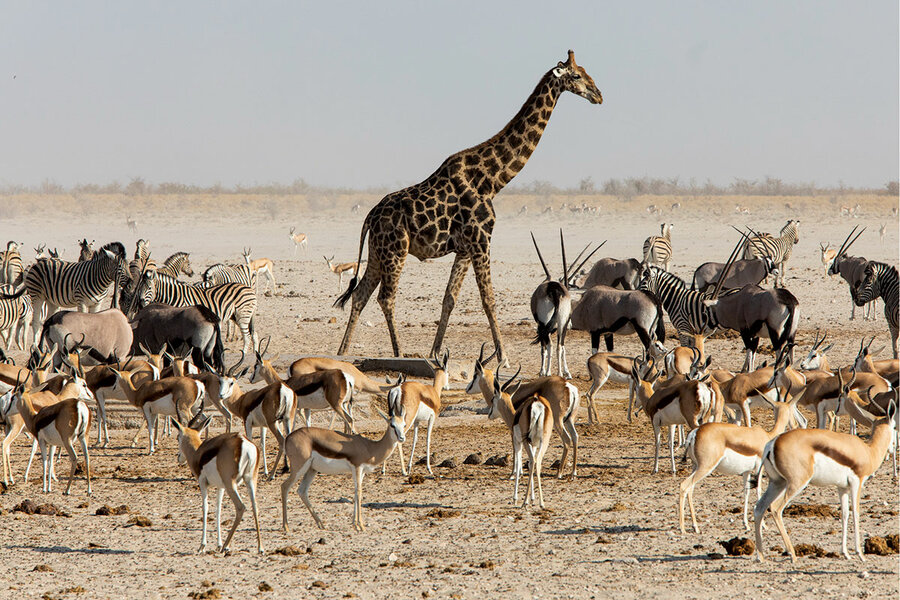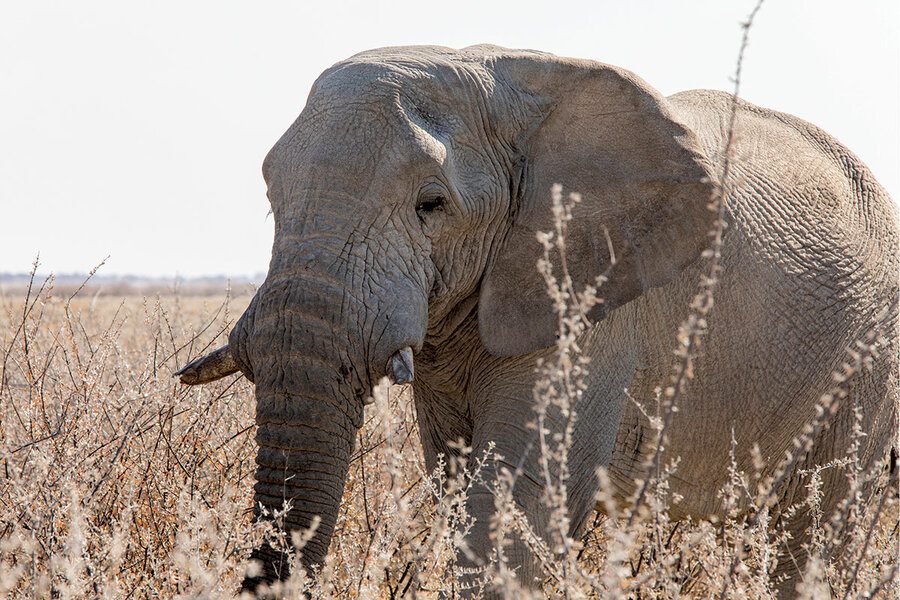In Pictures: Namibia and the elephant I’ll never forget
Loading...
| Etosha National Park, Namibia
A childhood dream of mine was to see an elephant – probably because of Ellie, the stuffed elephant I was given on my first birthday that still lives with me.
My tour of Etosha National Park in Namibia with photographer Melanie Stetson Freeman was coming to an end when I finally spotted one trudging solitarily across a barren field. I asked our guide if we could wait just a few minutes.
Why We Wrote This
Regular Monitor readers know that photographer Melanie Stetson Freeman is routinely smitten by animals. But on safari in Namibia’s Etosha National Park, it is her reporting partner who is left awestruck.
The guide cut the engine as the enormous beast approached and 15 minutes later paused right in front of us, seeming to give us a look before majestically walking on.
Quietly, I stared in awe. I could have sat there watching it all day, but it was time to go.
Expand this story to view the full photo essay.
On every reporting trip, staff photographer Melanie Stetson Freeman stops to convene with animals – whether they’re stray cats and dogs in Turkey or guanacos in the Chilean Patagonia. I can appreciate these creatures, but her love and enthusiasm for them always outmatches my own. Often I have to coax her away.
This held true as we observed giraffes, zebras, oryxes, and springbok while on assignment at Etosha National Park in Namibia. That is, until we spotted the elephant. Solitarily, it trudged across a barren field in the distance en route to one of the many watering holes that draw an abundance of wildlife during the winter’s dry season in this park, one of Africa’s largest.
A childhood dream of mine was to see an elephant – probably because of Ellie, the stuffed elephant I was given on my first birthday that still lives with me. Our tour was coming to an end, but I asked our guide if we could wait just a few minutes to see what the elephant would do.
The guide cut the engine as the enormous beast approached and 15 minutes later paused right in front of us, seeming to give us a look before majestically walking on.
Quietly, I stared in awe. I could have sat there watching it all day, but it was time to go. Otherwise it would have been Melanie hurrying me along.












